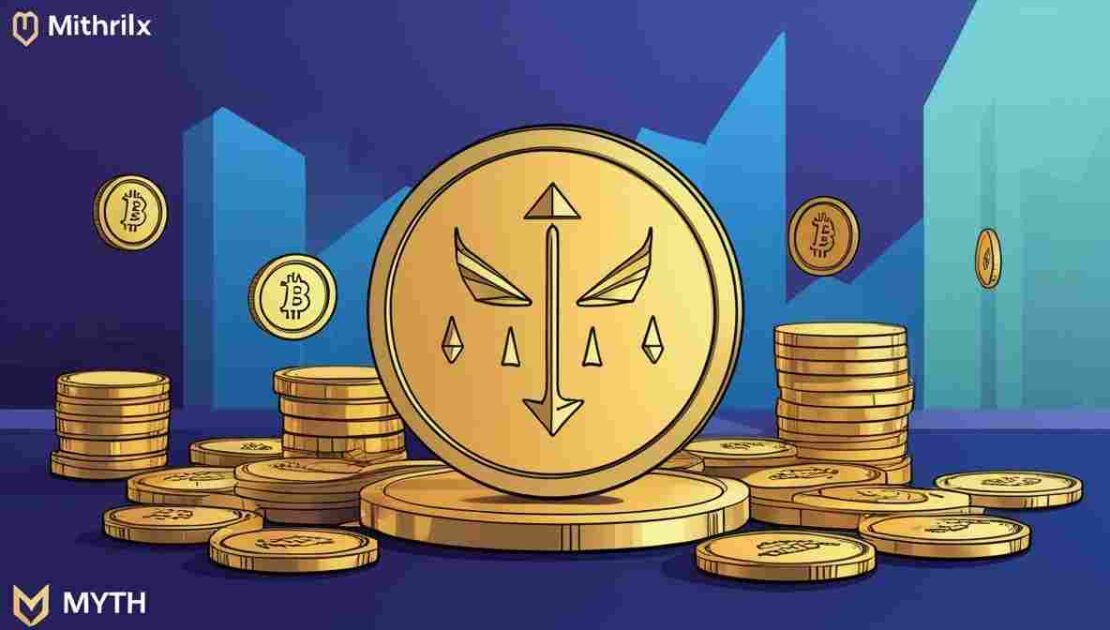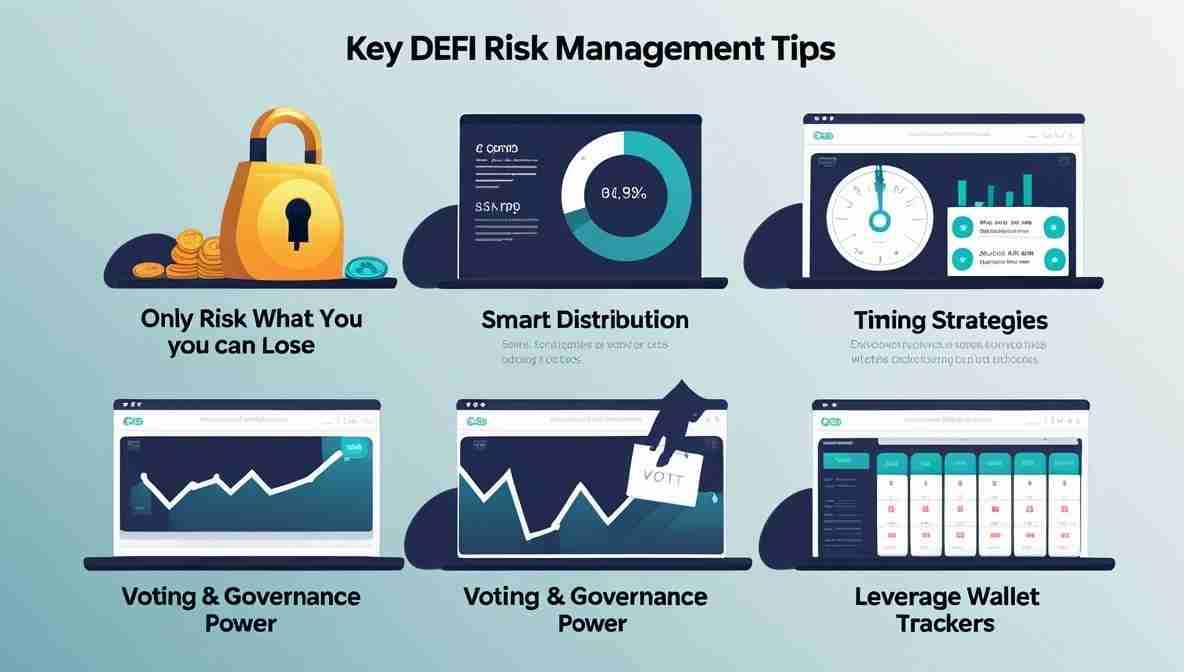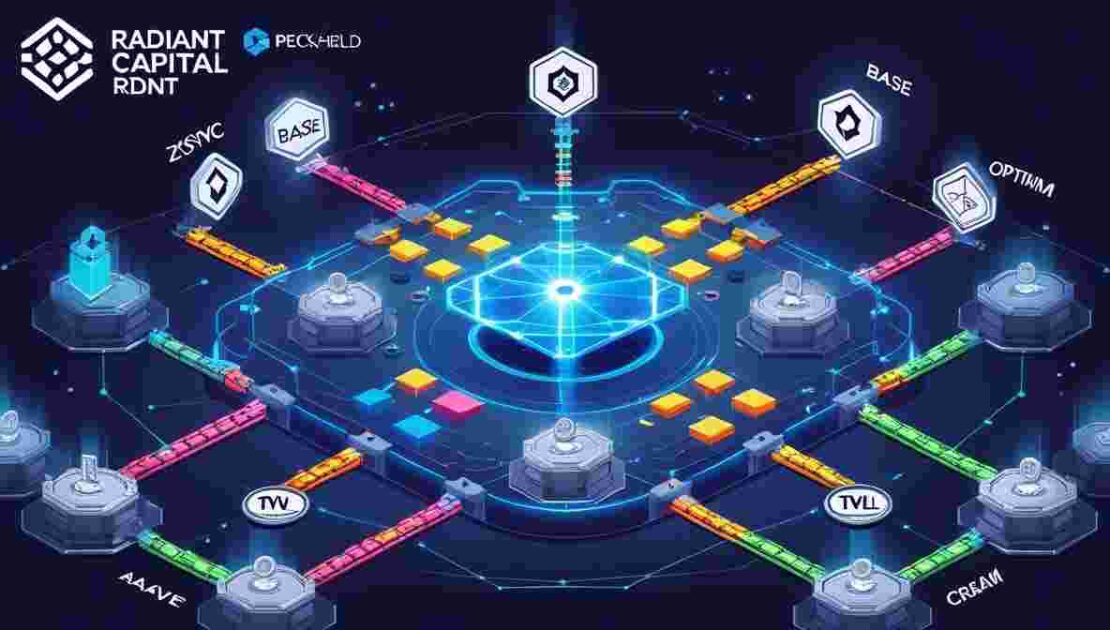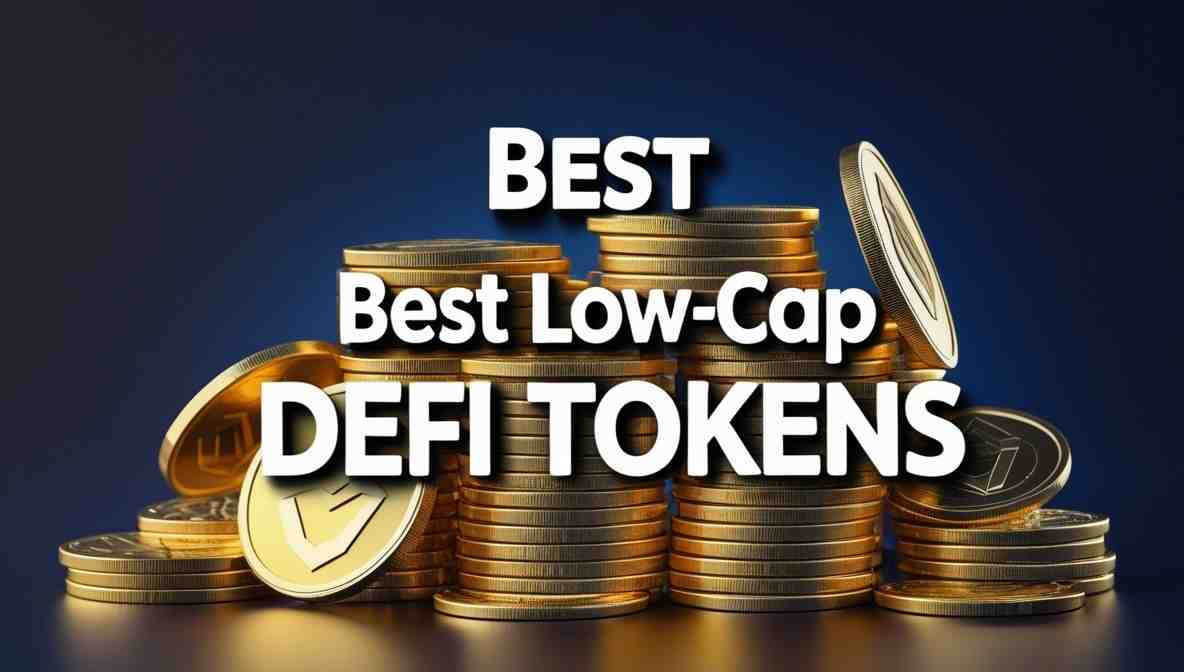In the booming world of decentralized finance (DeFi), low-cap tokens—cryptocurrencies with relatively small market capitalizations—offer the potential for massive gains. These under-the-radar projects are often in their infancy, yet they solve important problems or possess unique innovations. Of course, high reward comes with high risk: low liquidity, smart contract vulnerabilities, and speculative hype are common. This detailed guide explores the best low-cap DeFi tokens that you should watch, evaluates their use cases, and offers insights into how to approach investing in them safely.
1. What Are Low-Cap DeFi Tokens?
Low-cap DeFi tokens are the tokens of decentralized finance protocols whose market capitalization typically falls between $10 million and $500 million, though definitions vary. They often fall under:
- Micro-caps: $10M to $100M
- Small-caps: $100M to $500M
These tokens represent early-stage projects aiming to disrupt finance—via decentralized lending, yield optimization, insurance, or derivatives. If the project gains traction, low-cap tokens can skyrocket, sometimes giving 10x or higher returns. But if the project fails or loses investor interest, losses can be severe.
2. Why Invest in Low-Cap DeFi Tokens?
🔍 Early Adoption Advantage
Getting in early can lead to outsized returns if the team delivers on promises and adoption grows.
🧩 Innovation in Progress
Low-cap projects are often building new protocols—like cross-chain bridges, flash loan aggregators, or algorithmic stablecoins. Their innovation could reshape finance.
⚡ Portfolio Diversification
Including select low-cap DeFi picks adds excitement and potential in a diversified crypto portfolio. These tokens often behave independently of Bitcoin or Ethereum trends.
3. Key Evaluation Criteria
Before adding any token to your watchlist or portfolio, assess:
-
Use Case & Differentiation
What problem is the protocol solving? How is it better than established competitors? -
Team & Backing
Are there experienced developers or strong investors? Public audits help. -
Total Value Locked (TVL)
TVL shows how much capital is using the protocol—it’s a key indicator of adoption. -
Tokenomics
Beware of excessive supply inflation, vesting schedules, and token release mechanics that could suppress price. -
Risk Factors
Contracts audited? Rug pull risk? Regulatory red flags? -
Community & Growth
An active Discord, GitHub updates, and real-world partnerships matter.
4. Top Low-Cap DeFi Tokens to Watch (July 2025)
Below are promising low-cap tokens—innovative, undervalued, and showing early traction.
4.1 Radiant Capital (RDNT)
Market Cap: ≈ $80M | Category: Cross‑Chain Lending
Overview: Radiant seeks to unify lending across multiple chains (Arbitrum, Optimism, Avalanche) through a single aggregated protocol.
Why It Stands Out:
- Cross‑chain synergy floods lending markets with liquidity.
- Unique on-chain rate optimization.
- Robust early adoption with >$250M in TVL.
Risks: - High competition from Aave, Compound.
- Smart contract complexity across chains needs strong audits.
Analyst Insight: If Ethereum layer‑2 adoption surges, Radiant becomes a vital infrastructure piece.
4.2 APY.Finance (APY)
Market Cap: ≈ $45M | Category: Yield Optimization
Overview: APY auto-balances yield strategies across leading protocols (Curve, Compound, AAVE).
Why It Matters:
- Passive income for low-effort users.
- Real-time strategy switching improves returns versus static vaults.
Risks: - Evolving DeFi landscape; new vault competitors abound.
- Impermanent loss risks and security vulnerabilities.
Investor Note: APY remains undervalued relative to top yield aggregators.
4.3 Idle Finance (IDLE)
Market Cap: ≈ $60M | Category: Yield Aggregator
Overview: Similar to APY, Idle automates portfolio optimization between different yield providers depending on interest rates.
Key Strengths:
- Governance-driven adjustments via IDLE token holders.
- Supported by reputable DeFi devs.
Risks: - Lower TVL (~$200 M) than top competitors.
- Annualized returns are moderate—less competitive for high-risk yield chasers.
Takeaway: Good for moderate-risk, income-focused investors.
4.4 Aura Finance (AURA)
Market Cap: ≈ $120M | Category: Convex / Curve Booster
Overview: AURA enhances CRV farming incentives on Curve, enabling deeper rewards stacking.
Strengths:
- Value capture via multi‑token yield.
- Integrated well within Convex and Curve ecosystem.
Risks: - Highly dependent on Curve’s success.
- Competition from other boosters.
Investor Insight: Layered yield strategy may grow as Curve governance decentralizes.
4.5 Tokemak (TOKE)
Market Cap: ≈ $140M | Category: Decentralized Liquidity
Overview: Tokemak’s “reactors” guide liquidity mining rewards to select pairs, balancing ecosystem liquidity.
Perks:

- Grants users influence over liquidity distribution.
- Partnerships bring real traction (Angles, Alchemix reactors live).
Risks: - Centralized “reactor” holders may control direction.
- Liquidity allocation inefficiencies are possible.
Bull Thesis: Plays a vital role in solving fragmented DeFi liquidity.
4.6 MithrilX (MYTH)
Market Cap: ≈ $30M | Category: NFT & Gaming DeFi
Overview: A DeFi–NFT hybrid, providing yield on NFT collateral along with fractional ownership.
Why It’s Cool:

- Taps into NFT lending boom.
- Targeting retail gamers and collectors.
Risks: - Volatile NFT market undermines collateral value.
- Regulatory scrutiny around tokenized assets.
Watchpoint: NFT space revivals could propel MithrilX massively.
4.7 TreasureDAO (MAGIC)
Market Cap: ≈ $200M | Category: DeFi + Gaming Economy
Overview: Powered by Pixelmon and Treasure metaverse, MAGIC offers tokenized yield through game economies.

Attractive Traits:
- Real usage—staking for in-game loot.
- DeFi mechanics fueling game-centric token demand.
Risks: - Highly speculative—hinges on gaming project success.
- NFT-based risks like smart contract exploits.
Summary: Ideal for DeFi gamers seeking high upside but ready for volatility.
5. Strategy: How to Research & Invest Wisely
5.1 Do Your Own Research (DYOR)
- Read: Projects’ whitepapers, audits, and tokenomics.
- Check Socials: Active Discord, GitHub PRs, Telegram presence.
- Analyze TVL: Strong adoption is a positive signal.
- Smart Audits: Prefer protocols reviewed by Certik, PeckShield, or Trail of Bits.
5.2 Understand Token Supply
-
Know the fully diluted supply versus circulating. A token turning inflationary after lockups could depress value.
5.3 Gradual Investment
-
Allocate a small percentage (e.g., 1–3%) of your crypto holdings. Use DCA (Dollar-Cost Averaging) to ease volatility.
5.4 Secure Storage
-
Post-purchase, move tokens to a hardware wallet or trusted DeFi-safe wallet (e.g., MetaMask + Ledger combo).
5.5 Stay Informed & On Guard
- Follow audit updates.
- Pay attention to protocol team changes—forks, roadmap delays, or de-peg events.
5.6 Exit Plan
-
Before investing, set clear take-profit and stop-loss targets to control emotions.
6. Hidden Gems & Where to Learn More
For deeper insights on these token types, consider these resources:
- Internal Link: A great starting point is this definitive guide: Cryptocurrency Insights & Analysis.
- External Link: Learn more about the booming DeFi yield landscape via DeFi Pulse or DeFi Llama on analytics and TVL trends.
Additionally, a hands-on tutorial or how-to guide can boost investor confidence:
-
Check Tutorials on DeFi platforms for step‑by‑step support and conversions: https://blockwavetrends.com/tutorials-on-defi-platforms-how-to-create-step-by-step-guides-that-educate-and-convert/
7. Pros and Cons of Investing in Low-Cap DeFi
| ✅ Pros | ⚠️ Cons |
|---|---|
| Potential for exponential gains | High volatility and large drawdowns |
| Innovation & Alpha exposure | Rug pulls, hacks, exit scams |
| Lower entry prices than blue chips | Liquidity risks—harder to buy/sell |
| First-mover advantage if adoption grows | Poor governance or centralized influences |
8. Risk Management Tips

-
Only Risk What You Can Lose
Allocate a small slice of assets to low-cap DeFi—enough for upside, not catastrophic loss risk. -
Smart Distribution
Avoid single-token stakes; diversify within DeFi categories. -
Timing Strategies
Spread entries across market dips or following protocol updates. -
Voting & Governance Power
Engage where possible. Token holders can influence direction. -
Leverage Wallet Trackers & Alerts
Tools like Zapper, Debank, and Dune Analytics help monitor contracts, TVL, and token unlocks.
9. Case Study: Radiant Capital (RDNT) in Action
Let’s dive deeper into Radiant Capital, a standout example.

- Problem: Fragmented lending across layer-2 networks limits borrower and lender access.
- Solution: Radiant’s unified liquidity pool services multiple chains with one capital base.
- Tokenomics: 50% of RDNT tokens are vested via governance rewards. Emissions decline yearly.
- TVL Growth: Surpassed $250M in just six months.
- Security: Audited by PeckShield and CertiK.
- Upside Triggers: Launch on select chains (e.g., zkSync, Base). Low emissions driving scarcity. and Collateral integration for yield tokens.
-
Caveats: Tight competition from Aave/Cream. Vulnerable to cross-chain bridging hacks. and Centralized control might deter governance-minded holders.
Investment Thesis:
- Short-Term: Accumulate while TVL grows.
- Mid-Term: Yield farming and liquidity boosts.
- Long-Term: If Radiant becomes a go‑to for multi‑chain lending, RDNT may rally 5–10x, with caution around security and competition.
10. Watch Out for These Red Flags
-
Anonymous Teams
Transparency matters. Avoid fully anonymous or poorly credentialed squads. -
Inflationary Token Models
24-month runway okay—beyond that, dilution hampers price. -
Lack of Independent Audits
Skip protocols without third-party audits or where audits are outdated. -
Rapid TVL Drops
Sudden withdrawals or declining TVL indicate user distrust. -
Regulatory Vulnerabilities
Projects with high token vesting among founders or institutional investors carry centralized risk.
11. How to Discover Upcoming Low-Cap DeFi Tokens
- Follow projects on StageFi, CoinGecko’s upcoming DeFi lists.
- Join Discord communities like r/ethfinance or DeFi-focused groups.
- Tune into DeFi news portals and analytical platforms (e.g., DeFiLlama).
- Track upcoming token listings on decentralized launchpads.
12. Final Word: High Risk, High Reward
Low-cap DeFi tokens are speculative growth bets. If you’re confident in a token’s value proposition, use-case, and security, and you believe in broader DeFi adoption, such tokens can outperform more established assets.
That said, only allocate a small percentage of your portfolio, and treat these as experimental positions with clearly defined stop-loss and profit-taking points.
13. Summary Overview
- Focus on tokens with real tech, apt tokenomics, and early traction.
- Vet teams, audits, and TVL data.
- Diversify across categories—lending (Radiant), yield aggregation (Idle, APY), liquidity optimization (Tokemak), or gaming/NFTs (MAGIC).
- Use tools like Zapper, Debank, and Dune Analytics for portfolio monitoring.
- Stay alert to unlock schedules and security audits.
14. Further Reading & Resources
- Internal Reference
Enhance your DeFi knowledge with this in-depth analysis: Cryptocurrency Insights & Analysis - Tutorial Resource
Learn practical DeFi strategies and step-by-step walkthroughs here: Tutorials on DeFi Platforms - Authoritative Guide (External)
Understand DeFi’s components and trends in CoinDesk’s comprehensive DeFi overview (coinDesk.com).
15. Disclaimer
All information here is for educational purposes only and does not constitute financial advice. Cryptocurrency and DeFi are extremely volatile. Always do your own research (DYOR), consult financial professionals, and only invest what you can afford to lose.
Take Action
- Identify a token on this list that aligns with your risk appetite.
- Dive into its whitepaper, audit, and TVL metrics.
- Use tools like Zapper or DeFiLlama to track deployment.
- Consider allocating a small personal stake—and monitor regularly.
❓ FAQs: Best Low-Cap DeFi Tokens
What are low-cap DeFi tokens?
Low-cap DeFi tokens are cryptocurrencies with small market capitalizations (typically below $500 million) that power decentralized finance platforms. They are usually early-stage projects with high growth potential and higher risk.
How do I find the best low-cap DeFi tokens?
Look for projects with strong use cases, active development teams, solid tokenomics, third-party audits, growing Total Value Locked (TVL), and an engaged community. Tools like DeFi Llama, CoinGecko, and BlockWaveTrends can help you discover promising tokens.
Can I make money with low-cap DeFi tokens?
Yes, if you pick a solid project early and it gains adoption, you can earn significant profits. Some tokens have delivered 10x–50x returns. But remember, losses are equally possible, so proper research is essential.
Which are the top low-cap DeFi tokens to watch in 2025?
Some of the most promising low-cap DeFi tokens in 2025 include Radiant Capital (RDNT), APY.Finance (APY), Idle Finance (IDLE), Tokemak (TOKE), Aura Finance (AURA), and MAGIC (TreasureDAO).
Where can I buy low-cap DeFi tokens?
You can buy them on decentralized exchanges (DEXs) like Uniswap, SushiSwap, or centralized exchanges (CEXs) that support low-cap listings such as KuCoin, Gate.io, or MEXC.
How much should I invest in low-cap DeFi tokens?
Experts recommend only allocating a small portion of your crypto portfolio (1–3%) to low-cap DeFi tokens, as they are highly volatile. Diversify across several projects to reduce risk.
How do I track the performance of low-cap DeFi tokens?
Use platforms like Zapper, DeBank, and Dune Analytics to monitor your DeFi investments, token balances, yield earnings, and TVL trends.
